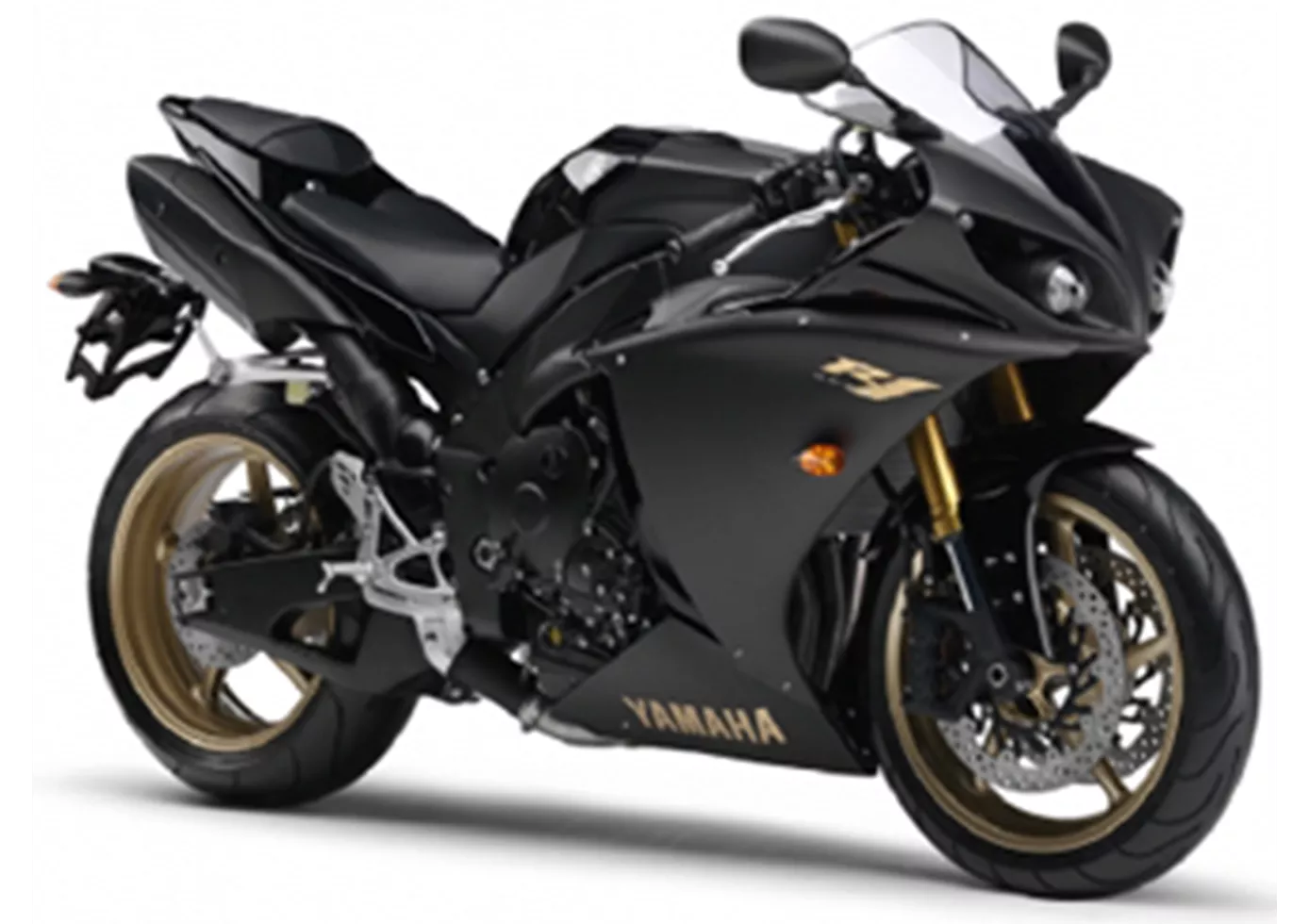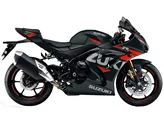Yamaha R1 2010 vs. Suzuki GSX-R 1000 2009

Yamaha R1 2010

Suzuki GSX-R 1000 2009
Overview - Yamaha R1 2010 vs Suzuki GSX-R 1000 2009
When comparing the Yamaha R1 model year 2010 and the Suzuki GSX-R 1000 model year 2009, it is important to consider their technical specifications and strengths and weaknesses.
Starting with the technical specifications, the Yamaha R1 2010 is equipped with a 998cc engine, producing 181 horsepower and 115.5 Nm of torque. It has a bore of 78mm and a stroke of 52.2mm. The engine features a DOHC valve system and has four cylinders. The frame of the Yamaha R1 is made of aluminum and has a Deltabox frame type. The front brakes are double disk, and the front and rear tires have a width of 120mm and a diameter of 17 inches. The wheelbase is 1415mm, and the seat height is 835mm. The kerb weight of the Yamaha R1 is 206kg, and it has a fuel tank capacity of 18 liters.

Yamaha R1 2010
On the other hand, the Suzuki GSX-R 1000 2009 is equipped with a 999cc engine, producing 136 horsepower and 116.7 Nm of torque. It has a bore of 74.5mm and a stroke of 57.3mm. Similar to the Yamaha R1, the engine features a DOHC valve system and has four cylinders. The frame of the Suzuki GSX-R 1000 is also made of aluminum but has a Twin-Spar frame type. The front brakes are double disk, and the front and rear tires have a width of 120mm and a diameter of 17 inches. The wheelbase is 1405mm, and the seat height is 810mm. The kerb weight of the Suzuki GSX-R 1000 is 203kg, and it has a fuel tank capacity of 17.5 liters.
In terms of strengths, the Yamaha R1 2010 has a strong engine with a sophisticated character. It offers optimal braking performance and a comfortable seating position. On the other hand, the Suzuki GSX-R 1000 2009 has improved geometry, a compact engine design, and a relaxed seating position. It also features a system with multiple height adjustments and an anti-hopping clutch.
However, the Yamaha R1 2010 does have some weaknesses. It has suboptimal suspension elements, which may affect the overall performance and comfort. Additionally, it has a lower peak power compared to the Suzuki GSX-R 1000. The traction of the Yamaha R1 is slightly weak, and it has a high weight, which may impact maneuverability.

Suzuki GSX-R 1000 2009
Similarly, the Suzuki GSX-R 1000 2009 also has some weaknesses. The accessibility of compression adjustment is suboptimal, which may make it difficult for riders to fine-tune the suspension. It is also weak in the lower rev range, which may affect acceleration. The Suzuki GSX-R 1000 is not recommended for beginners due to its performance capabilities.
In conclusion, both the Yamaha R1 2010 and the Suzuki GSX-R 1000 2009 have their strengths and weaknesses. The Yamaha R1 offers a strong engine and optimal braking, while the Suzuki GSX-R 1000 has improved geometry and a versatile seating position. However, the Yamaha R1 has suboptimal suspension and lower peak power, while the Suzuki GSX-R 1000 has accessibility issues with compression adjustment and is not suitable for beginners. Ultimately, the choice between these two models depends on the rider's preferences and priorities.
Technical Specifications Yamaha R1 2010 compared to Suzuki GSX-R 1000 2009
Pros and Cons in comparison
Pros and Cons in comparison
Yamaha R1 2010

The current engine in the R1 scores points above all with its unmistakable sound, very transparent response and linear power delivery. In terms of peak power, however, Yamaha had to cut back a little.
Suzuki GSX-R 1000 2009

The GSX-R 1000 remains something for the experienced rider, despite its precise and balanced rideability and controllable power delivery. Suzuki knows that a thousand must remain a thousand and strictly adheres to this. Let's hope that they can continue to do so for a long time.
Price Comparison Avarage Market Price Yamaha R1 vs Suzuki GSX-R 1000
There are a few key differences between a Yamaha R1 2010 and a Suzuki GSX-R 1000 2009. In terms of price, the actual average price of a Yamaha R1 2010 is about 27% higher. Compared to Suzuki GSX-R 1000 2009 there are less Yamaha R1 2010 bikes available on the 1000PS.de Marketplace, specifically 5 compared to 6. It takes less time to sell a Yamaha R1 with 53 days compared to 64 days for a Suzuki GSX-R 1000. Since model year 2005 1000PS.de editors have written 80 reviews for the Yamaha R1 and 71 reviews for the Suzuki GSX-R 1000 since model year 2005. The first review for the Yamaha R1 was published on 4/28/2003 and now has more than 3,900 views. This compares to more than 7,100 views for the first review on Suzuki GSX-R 1000 published on 3/3/2004.
























